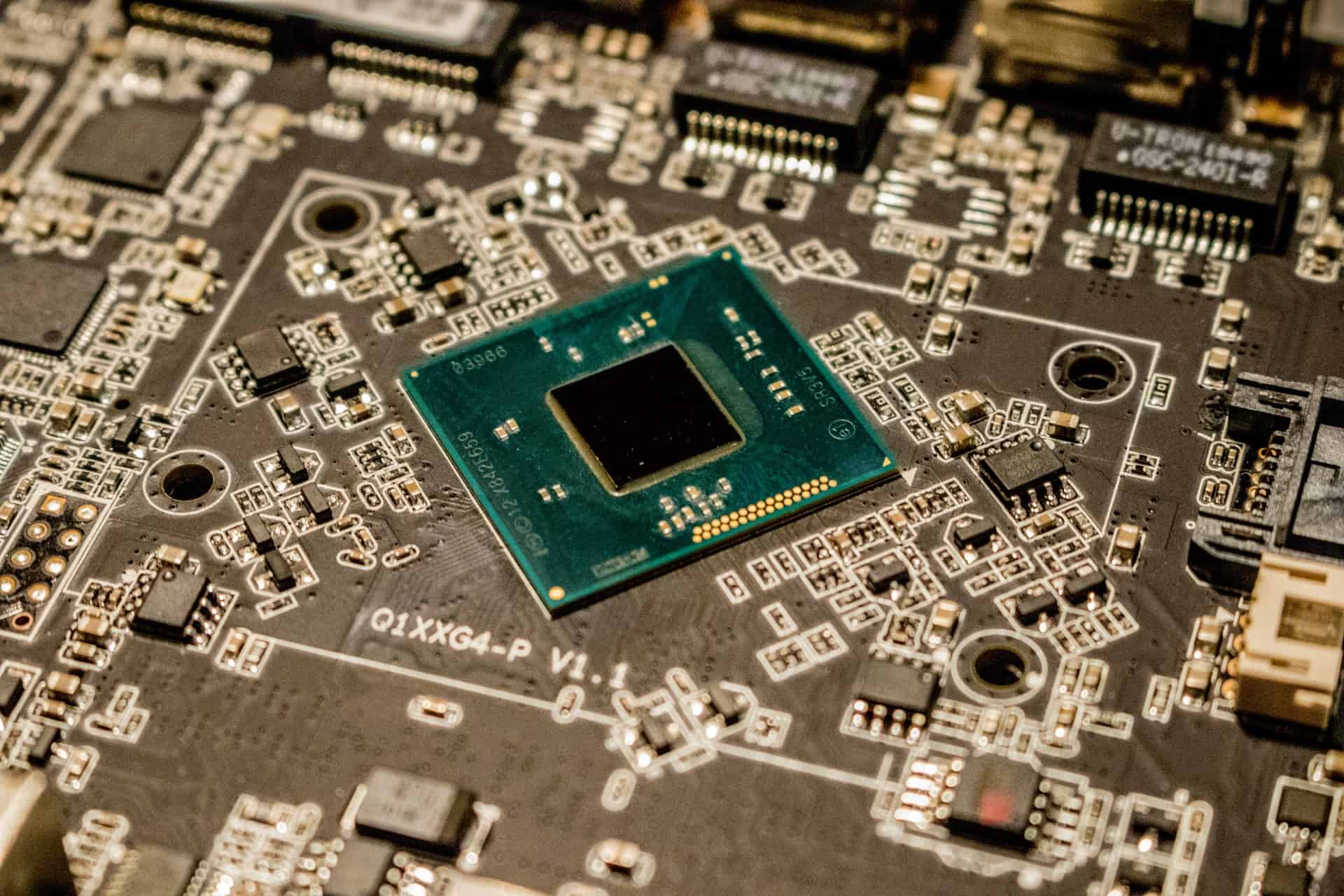
Microelectronics Manufacturing Heading Back to USA
March 11, 2021 - Emily Newton
Revolutionized is reader-supported. When you buy through links on our site, we may earn an affiliate commision. Learn more here.
The United States no longer has such a prominent position in the semiconductor manufacturing industry. That reality has multiple consequences. This situation doesn’t just put a strain on consumer markets and make it more difficult to source essential components. It also poses possible national security threats. It’s harder, and sometimes impossible, to verify that imported goods don’t contain dangerous flaws.
As other nations gain strength in this manufacturing area, American decision-makers are coming together to determine the best ways increase domestic production. Here’s a look at why it’s crucial and which routes they might take to achieve goals.
An Uneven Situation
The circumstances whereby other nations gained ground in microelectronics manufacturing did not happen quickly, and the U.S. does still hold a majority share in some aspects of the semiconductor industry.
The Wall Street Journal recently covered this topic and included supplementary data to break down the issue. For example, 2019 data showed that U.S.-based semiconductor companies held approximately 47% of the market share for semiconductor sales.
The content also confirmed that while the U.S. has an 85% share of the chip design software market, the amount drops to 12% for chip manufacturing itself. In contrast, the United States has a 49% share of aerospace manufacturing.
A related issue mentioned by The Wall Street Journal was that China, Korea, and Taiwan have increased their net shares of new chip manufacturing capacity since 1990, but that is not the case in the United States. Analysts believe if something doesn’t change soon, China, in particular, will start gaining even more ground.
Government programs in many Asian countries make it appealing to build and operate chip manufacturers in those places. For example, they may provide free or inexpensive land for the factories or offer assistance with purchasing the equipment used to make semiconductors.
The United States does not currently extend assistance to that extent at the federal level. However, starting to provide them through clear, direct means could be one of the many things that help change the situation.
One study found that it currently costs 37%-50% more to build and operate a semiconductor fabrication facility in the United States than in China, due in part to the lack of federal incentives. Given that difference, it’s no surprise that the U.S. is not typically the most attractive place to fabricate semiconductors right now.
President Biden Will Review Microelectronics Manufacturing Shortcomings
Making progress in domestic manufacturing will require a concentrated effort and careful planning. People should not expect a significant improvement in the short term. However, it could soon become clearer how U.S. authorities plan to address the issue.
That’s because President Joe Biden tapped the semiconductor sector as one of several that will undergo review to investigate domestic supply chain shortcomings. The assessment’s timeline indicates this initiative will take several months or more to finish.
The related executive order didn’t mention specific countries. However, it discussed a reliance on nations that could become unstable or hostile to the United States. Besides semiconductor manufacturing, other sectors under investigation include medical supplies, high-capacity batteries, and rare earth metals.
This effort suggests President Biden realizes that tackling key supply chain vulnerabilities now could help the U.S. in business and national aspects.
The upcoming examination of the state of microelectronics manufacturing will move ahead with a two-phase approach. The first step involves spending 100 days reviewing and analyzing the sector. After that, the responsible parties will begin looking at the industries that rely on the products studied.
Information gathered during both steps will yield specific recommendations given to President Biden about how to resolve the identified problems. Those could include trade route changes and diplomatic agreements, among other efforts.
Representatives from companies that manufacture semiconductors have reportedly pressured Biden to approve subsidies to facilitate research and new factory construction. In February 2021, numerous parties affected by the executive order collaborated on a letter to the U.S. president. They also brought up a possible tax credit for qualifying purchases on semiconductor equipment. The main challenge faced there is that such necessities often cost billions of dollars. This is much more than building the factories themselves.
Domestic Manufacturing Supports National Security
Concentrated supply chain activity can pose a national security risk. What if the U.S. is suddenly unable to get components from a primary source due to trade tensions with one or more nations?
During the recent Defense Advanced Research Projects Agency’s (DARPA) Electronics Resurgence Initiative Summit, speakers gave their thoughts on existing risks associated with semiconductor production. One identified worry is that it’s more challenging for parties to verify that parts don’t arrive in the U.S. containing security flaws.
Some of the advanced weapons used by the country for defense feature microelectronics. What if imported parts put the United States at risk while providing advantages for the nation’s enemies during wartime?
During the discussion, participants clarified that semiconductor design often happens in the U.S., but fabrication occurs elsewhere. They advocated for fabrication, packaging, and testing to all occur domestically instead. Over the last several decades, it became less expensive to fabricate semiconductors overseas.
That’s one of the top reasons why the United States lost its dominant position. Returning to its former prominence means creating public-private partnerships to generate the necessary funding.
Additionally, showing evidence of domestic semiconductor manufacturing demand should encourage company leaders to reshore facilities or establish new factories here.
The required shift won’t happen without time, effort, and funding. However, success could make the United States a more prosperous nation that is less dependent on foreign exports to meet semiconductor sourcing needs.
Semiconductor Manufacturing Woes Have Multiple Ramifications
The COVID-19 crisis brought public health threats and illuminated the issues with excessive supply chain concentration and reliance on foreign countries. Many consumers waited weeks for online orders when the were previously accustomed to getting the products in a few days.
Moreover, many of the countries that currently have an edge in making semiconductors were among the first to have virus-triggered lockdowns. In one case, a Singaporean electronics component maker experienced around 8,000 item shortages per day.
One market analysis company shed light on the automotive industry’s impact. The associated report revealed that an existing and now exacerbated semiconductor shortage would lead to production delays for an estimated 1 million vehicles during the first quarter of 2021. A provided example was that microcontroller units typically have a 12-16-week lead time. The supply chain issues extended it to at least 26 weeks.
Such slowdowns mean supply chain providers have difficulties meeting obligations, and numerous other parties experience the effects.
For example, an automaker may reschedule its planned launch of an in-demand vehicle, causing widespread consumer disappointment. At the dealership level, salespeople could find that they sell fewer cars overall because there aren’t as models in stock. Many committed consumers would rather wait to get the automobiles they’d planned on than settle for substitutes.
A Prolonged Effort With Multiple Solutions
Getting semiconductor manufacturing back to the U.S. at scale will not be easy or quick. However, the good news is that there are multiple paths the country could take to reach its goals. That means it’s easier to try certain approaches for a while and then measure the results to see if it’s worthwhile to continue them.
Something else for people to keep in mind is that progress will appear as a gradual payoff. It won’t be an overnight success. It takes a while for fabrication entities to close factories or reduce operations in one destination and open facilities elsewhere. However, as the situation starts showing noticeable improvements, it’ll be easier to justify the time and money spent on the achievements.
The United States’ semiconductor supply chain must become more resilient against shocks that could cause disruptions for months or years. There’s no straightforward way to do that. Nonetheless, one of the most compelling options presently is to encourage more manufacturing to occur domestically instead of overseas.
It’ll be interesting to see how this evolving situation plays out over the next several months and years and what people in leadership decide to do when addressing the problem.
Revolutionized is reader-supported. When you buy through links on our site, we may earn an affiliate commision. Learn more here.
Author
Emily Newton
Emily Newton is a technology and industrial journalist and the Editor in Chief of Revolutionized. She manages the sites publishing schedule, SEO optimization and content strategy. Emily enjoys writing and researching articles about how technology is changing every industry. When she isn't working, Emily enjoys playing video games or curling up with a good book.




